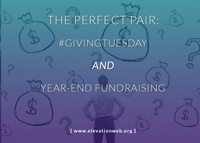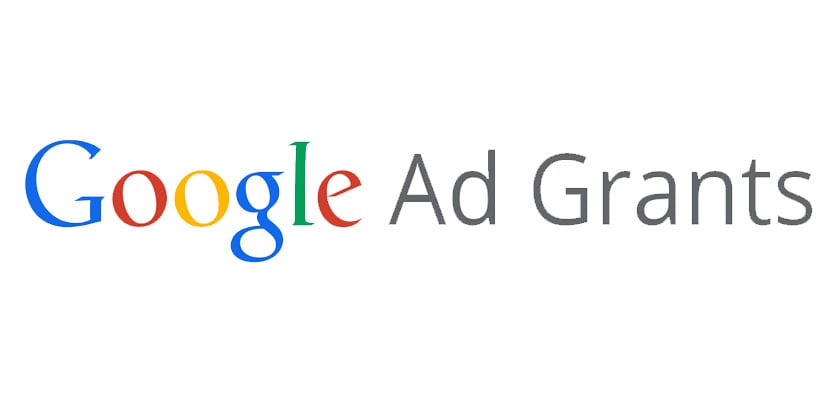Product fundraising is more than an incentive for donors to give. Though trust us, it is an incentive (after all, who can say no to some scrumptious snacks, comfy t-shirts, or festive gift wrap?).
A product fundraiser is also an opportunity for your nonprofit to make its presence known, recruit new donors, and further relationships with current supporters.
Since many nonprofits take their product fundraising to the web, these fundraising campaigns have the potential to extend through supporters’ networks and reach new donors.
Let’s take a look at our 6 top-notch product fundraising ideas that will help you make the most of your product fundraising potential:
-
Get visual.
-
Turn fundraising into a team affair.
-
Brand your practical products.
-
Match your products to your cause.
-
Integrate across communication channels.
-
Show donor love and appreciation.
Let’s see what product fundraisers can offer your organization by getting started with number 1.
1. Get visual.
Products offer a unique opportunity in fundraising. They’re visual, physical things you can photograph.
Pictures can captivate your audience, drawing more engagement and interest to your fundraising campaign.
A picture is worth a thousand words, right? Visuals will allow your products to sell themselves, as supporters can actively see how appealing the products are.
Be sure to include visuals in all of your product fundraising appeals and webpages.
To get started, you can try these visual strategies:
- Post group photos. A stagnant photo of your fundraising product is okay, but you can really step up your visual appeal with pictures of supporters actually using or wearing your product. Though your nonprofit can create these photos, you can also appeal to your supporters and have them submit pics on your social media pages. For ideas on products to try, you can check out this guide!
- Create infographics. You don’t have to limit yourself to photos. Visual creativity can be expressed in a shareable infographic that explains how your product is being used to help people. You can purchase icons, or use free or open-source design software to create an infographic. Just be sure that your infographics are simple, clear, and easy to understand.
Each of these strategies adds interest and persuasion to your campaign.
After all, if people see others using your product, and if they understand how purchasing your product can help other people, then they’ll be more inclined to support your fundraiser themselves.
Top Product Picks:
These products are especially visually interesting:
- T-shirts. Friends wearing matching t-shirts is a statement. People love to take photos in groups, and t-shirts are the perfect product to band supporters together for your cause.
- Food. Posting food pics to social media is a tradition that your nonprofit can capitalize on. Get your supporters’ taste buds watering with high-quality, close-up images of your food products.
2. Turn fundraising into a team affair.
Let’s imagine two fundraising scenarios.
Your nonprofit is selling wallaby t-shirts to support your upcoming wallaby walkathon. You send an email appeal to your supporters. Around half of them open the emails, and a quarter actually buy the t-shirts.
You’ve raised some money, but you haven’t grown your base of supporters.
Now, imagine that your supporters are the ones doing the selling. They’re sharing your wallaby t-shirts, posting photos in your t-shirts, and reaching out to their extended networks of friends and family members.
In this example, your supporters take the reigns in fundraising, and they’ve spread the word about wallaby conservation, reaching new supporters as a result.
The second example is an instance of peer-to-peer fundraising.
Pairing your product fundraiser with peer-to-peer fundraising can help you grow your organization’s presence and receive more donations.
You can even implement product fundraising into your next event for maximum peer-to-peer and team fundraising. Booster’s walkathon guide, for example, can show you how to use product fundraising for walkathons, though the strategies could be applied across many fundraising events.
Now, let’s take a look at some products that pair well with peer-to-peer fundraising.
Top Product Picks:
- Custom clothes. Custom clothes, like the t-shirts mentioned above, are a great way for supporters to showcase their love of your organization while drawing their peers into your cause.
- Custom gear. Water bottles, tumblers, cinch-packs, and backpacks are practical items that your supporters may use daily. Supporters can demonstrate the value of your nonprofit’s products by actively using them around their personal networks.
Bonus: Learn more about peer-to-peer fundraising.
3. Brand your practical products.
While it’s important that you brand all of your fundraising products, your practical products will likely receive the most use from your supporters. And why is it vital that you brand them?
Branding connects your supporters to your nonprofit. Whenever they use your product, they can be reminded of your organization.
Staying at the front of your supporters’ minds is important for retaining donors and keeping them invested in your nonprofit.
Additionally, branding can be great advertising for your nonprofit. When your supporters use branded products, especially in public places, they’re showcasing your organization.
To brand your products, you can include:
- Your nonprofit’s name.
- The name of your specific fundraising campaign.
- Your nonprofit’s logo.
- Your nonprofit’s colors.
You don’t have to include all of these elements at once; the larger point is that the branding is recognizable to your donors.
Top Product Picks:
These products are the kind of practical items that always warrant branding:
- Personal items. Lip balm, hand sanitizer, and other small, personal items are objects that supporters may carry around with them all the time. A well-branded product will remind supporters of your cause.
- Car chargers. A car charger is a handy product that many people will use again and again. Your nonprofit can offer car chargers as the useful items that they are, all while highlighting your brand.
4. Match your products to your cause.
Some organizations have the opportunity to create unique fundraising products that really speak to the heart of their cause.
Products that are related to the cause your organization supports can be vivid reminders of what your fundraising campaign is really about: helping people in need.
For example, some organizations have the opportunity to seek hand-made crafts from the recipients of their aid. The organization can facilitate the sale of these items, and use the funds to directly aid the people who’ve made the products. That way, supporters can see the direct connection between their purchase and philanthropy.
This strategy may take some creativity on the part of your organization, but matching your product to your cause doesn’t have to be so literal.
All organizations have the opportunity to specify how purchasing a product will help the people that the nonprofit serves.
For example, on your product fundraising webpage, you’ll want to explain how a single purchase can help the recipients of your nonprofit’s aid.
You can be general: Purchase a wallaby t-shirt to support our wallaby conservation project.
But it’s better to be as specific as possible: Buying one wallaby t-shirt will feed a wallaby for a month.
Showing supporters how their purchase will benefit the people or animals that they care about can incentivize them to donate and spread the word about your fundraising campaign.
You should also clarify the language on your donation buttons. For example, it’s better to say “Give” or “Make a Donation” than it is to say “Submit.”
That way, supporters feel as if they’re donating to your organization, rather than simply buying a product.
Top Product Picks:
When it comes to matching a product with an organization, some nonprofits will have a clearer connection than others. Let’s take a look at some of the most relevant connections.
- Animal-welfare products. Pet tags and dog treats are great products to support animal welfare organizations. After all, primary supporters are likely to be animal-lovers and pet-owners themselves!
- Environmentally friendly products. For environmental organizations, product drives such as battery recycling, used cell phone recycling, or upcycled artwork are the perfect way to spread the message of conservation while earning a profit.
- School products. School supplies or mascot sales work well for educational fundraisers and can be sold to students, teachers, and parents.
5. Integrate across communication channels.
To most effectively advertise your product fundraiser, you’ll want to reach out to supporters as organically as possible.
That means you’ll need to spend some time marketing your products through your nonprofit’s usual communication channels, including:
- Email.
- Social media.
- Newsletters.
- Bulletin boards.
- Print mail.
- Your website.
Implementing your product fundraiser across these channels helps you reach more donors and emphasize the fundraising campaign’s importance.
After all, the more attention you draw to your fundraising campaign, the more your donors will be able to see how much it matters to your overall mission.
That said, you don’t want to bombard your donors with your campaign, or they may begin to feel annoyed.
To create the most effective communications, you’ll want to craft a targeted strategy.
You can incorporate specific strategies for each channel. For example, social media and newsletters will each have their own flavor of outreach. But you also want to think about how your advertisements are working in conjunction with each other.
To do so, you’ll want to consider:
- Toolkits. If you’re using peer-to-peer fundraising (which you should!), then you’ll want to keep all of your supporters on the same page. Toolkits can include suggested copy for emails and posts and images and videos that your supporters can access. That way, even as each supporter makes an individual appeal, your overall message and branding remain the same.
- Variation. Your emails should sound different than your print mail, so that supporters aren’t overwhelmed with the same appeals. You can introduce your product fundraiser via mailed materials and provide more details and pictures in your emails, for example.
Top Product Picks:
Though all of your product fundraisers should be incorporated across your communication channels, these products are especially great for various channels:
- Coupon books and discount cards. These products usually highlight local businesses or restaurants in your community. As such, you have an opportunity to create a multifaceted marketing plan, where both the businesses and your nonprofit advertise the fundraising campaign.
- Product packages. Packages, such as a dinner and movie package, are great for multiple communication channels because they offer donors an experience. Your advertisements can highlight the value of the donation as well as the fun of the experience itself. You have tons of material to create diverse communications!
6. Show donor love and appreciation.
Even though donors are purchasing a product, they’re still making a donation.
You must thank your donors for their purchase. After all, they’re making a difference to your cause.
A donation receipt can be the first acknowledgement of a donor’s contribution.
Automated donation receipts are a feature of most product fundraising platforms. You’ll either want to:
- Customize your donation receipts to include a thank you.
- Send a separate thank you letter that invites new donors into your organization and encourages continued support from current donors.
According to this NeonCRM resource, “Sending donors the proper follow up is crucial to good stewardship. Providing a receipt lets them know you’ve received their donations, and acknowledging their gifts makes them feel appreciated, both of which lead to higher retention rates (e.g. more donations!).”
In the name of donor stewardship, it’s vital that you use your receipts.
It is especially important to thank your donors because product fundraising provides your organization with the opportunity to reach a wide variety of new supporters. Your products may draw these supporters to your organization; it’s your job to keep them there.
Proper thanks can increase donor retention and set the foundation for starting new relationships.
In contrast, a lack of recognition can lead to wasted potential.
Top Product Picks:
Some products have a way of thanking donors on their own. Some of these products include:
- Brick fundraising. Brick fundraisers allow donors to leave a legacy to your organization. Having their names engraved on bricks is its own kind of recognition (though you should still thank your donors properly!).
- Custom murals. Donors who contribute to this fundraiser will receive a part in a custom mural. They may have their name displayed beside it, or they may even be incorporated into the artwork itself. Like brick fundraisers, custom murals allow donors to leave a legacy that creates its own kind of recognition.
With these strategies and examples, your nonprofit can use product fundraising to your advantage.
Are you ready to tackle your next product fundraiser? Do you have any ideas of your own that you’d like to contribute? Let us know in the comments!



